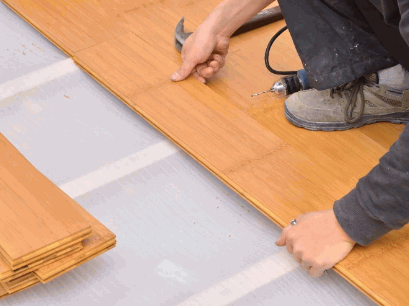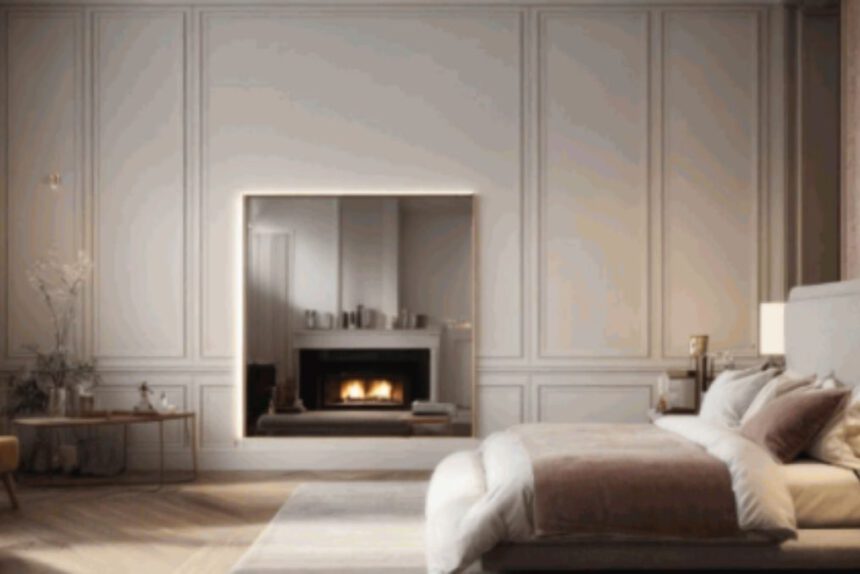Best Floor For Bedroom
Choosing the right flooring for your bedroom is a crucial decision that can significantly impact the overall look, feel, and functionality of the space. With an array of options available, including carpet, hardwood, laminate, vinyl, tile, cork, and bamboo, it’s important to understand the unique characteristics and benefits of each type to make an informed choice.
In this comprehensive guide, we’ll explore what makes a good bedroom floor, delve into the different types of bedroom flooring, discuss how to choose the best option for your needs, weigh the pros and cons of each flooring type, and provide insights into the installation process for each.
Whether you’re seeking warmth, durability, ease of maintenance, or aesthetic appeal, this article will equip you with the knowledge you need to make a well-informed decision about the best flooring for your bedroom.
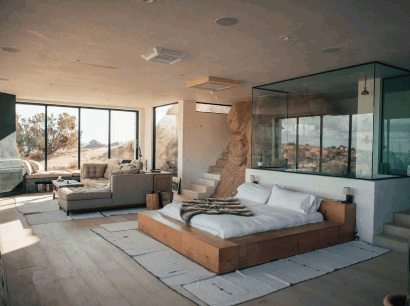
What Makes A Good Bedroom Floor?
Choosing the right bedroom floor is essential as it sets the foundation for the room’s aesthetics, comfort, and functionality. Factors such as durability, maintenance, and visual appeal play significant roles in determining the best floor for your bedroom.
When considering durability, options like hardwood or laminate flooring are popular choices due to their ability to withstand heavy foot traffic and daily wear and tear. These materials also offer ease of maintenance, making them ideal for a bedroom environment.
On the other hand, carpeting can provide a soft and cozy feel, absorbing noise and adding warmth to the room. It requires regular cleaning and may not be as durable as hard surfaces. Taking these factors into account ensures that your bedroom floor not only looks appealing but also meets your practical needs.
Uncover more: Bedroom Side Table Ideas
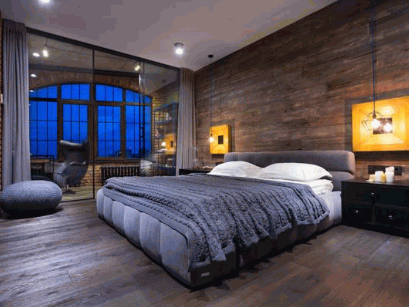
What Are The Different Types Of Flooring for Bedrooms?
Bedrooms offer a range of flooring options, each with distinct characteristics and suitability for different preferences. From the timeless elegance of hardwood to the cozy comfort of carpet, the choices are diverse and cater to various needs and styles.
Carpet
Carpet flooring offers a plush and cozy surface that brings warmth and comfort to bedrooms. Its installation and maintenance requirements, along with its noise reduction properties, make it an appealing choice for those seeking a soft and stylish bedroom floor.
The soft texture of carpet flooring provides a gentle cushioning effect underfoot, promoting a serene and inviting atmosphere. Its noise-reducing qualities make it ideal for creating a peaceful and quiet environment.
With a wide range of styles, from Berber to plush to textured loops, carpet flooring offers versatility to suit various interior designs. Its installation process involves careful measurement, padding placement, and professional expertise to ensure a flawless finish. Regular vacuuming, occasional deep cleaning, and prompt stain removal are essential for maintaining its luscious appearance.
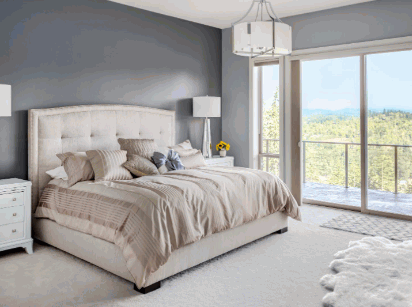
Hardwood
Hardwood flooring exudes timeless elegance and offers exceptional durability for bedroom spaces. Its aesthetic versatility, low maintenance requirements, and straightforward installation make it a popular choice for creating a refined and enduring bedroom floor.
The natural beauty of hardwood flooring lends a warm and inviting ambiance to any bedroom. With a wide array of styles and design options, from rich oak to sleek maple, homeowners can find the perfect hardwood to complement their interior decor.
Beyond its stunning appearance, hardwood flooring is renowned for its resilience, resisting wear and tear over time. Whether you prefer classic, rustic, or contemporary aesthetics, hardwood flooring provides a timeless and captivating foundation for your bedroom sanctuary.

Laminate
Laminate flooring presents a cost-effective and durable alternative for bedroom floors, offering a wide range of styles that mimic the appearance of hardwood, tile, or stone. Its durability, ease of installation, and affordability make it an attractive choice for budget-conscious homeowners.
It’s worth noting that laminate flooring is known for its resistance to scratches, stains, and fading, making it an excellent choice for high-traffic areas in the home. Its easy click-and-lock installation system allows for a quick and hassle-free setup, saving both time and money on professional installation.
With diverse aesthetic options such as embossed, hand-scraped, or smooth finishes, homeowners can easily find a style that suits their preferences and complements their bedroom décor.
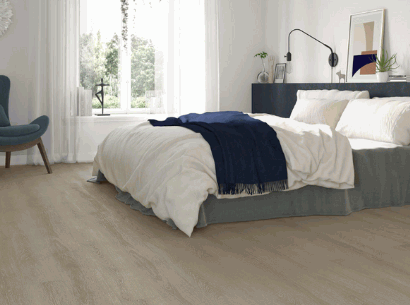
Vinyl
Vinyl flooring offers a versatile and resilient option for bedroom floors, with a wide array of design choices and durability against moisture and wear. Its low maintenance requirements, ease of installation, and suitability for different environmental conditions make it a practical and stylish flooring solution.
Its versatility extends to its resistance to scratches, stains, and fading, making it an ideal choice for high-traffic areas such as kitchens and bathrooms. Vinyl flooring can emulate the look of natural materials like wood, stone, or tile, providing homeowners with endless aesthetic options. Its durability and water-resistant properties also make it suitable for use in basements or areas prone to moisture. With its simple click-and-lock or peel-and-stick installation, vinyl flooring is an excellent choice for DIY homeowners or a quick renovation project.
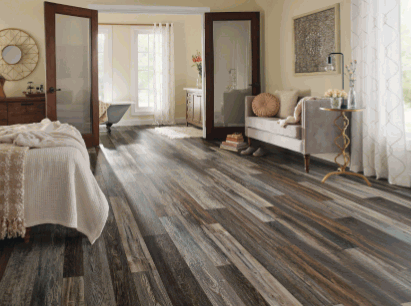
Tile
Tile flooring offers a durable and visually appealing choice for bedroom floors, with a wide range of design options that cater to different aesthetic preferences. Its durability, ease of maintenance, and suitability for radiant heating systems make it a practical and stylish flooring solution.
The versatility of tile flooring allows homeowners to select from an array of colors, patterns, and textures, such as ceramic, porcelain, or natural stone, to complement their bedroom decor. Whether aiming for a sleek contemporary look or a rustic, earthy feel, there is a tile design that suits every style.
The option to integrate radiant heating under tile floors ensures comfort during colder months, making it a desirable choice for bedrooms.
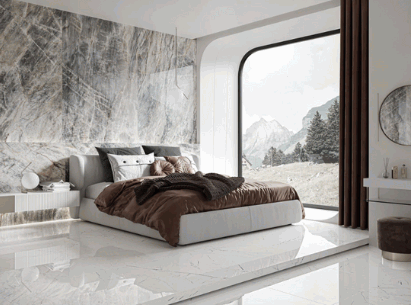
Cork
Cork flooring offers a comfortable and eco-friendly solution for bedroom floors, providing natural warmth and resilience. Its durability, ease of installation, and environmental benefits make it a sustainable and inviting flooring choice for those seeking comfort and environmental consciousness.
With its insulating properties, cork flooring retains warmth, making it a cozy option for bedrooms. Its natural shock-absorbent and water-resistant features enhance its durability. The ease of installation further adds to its appeal, as it can be installed as floating floors or glued down, reducing the time and effort required for the installation process.
The renewable nature of cork, harvested from the bark of cork oak trees without causing harm to them, makes it an environmentally friendly choice, promoting sustainability and reducing carbon footprint.
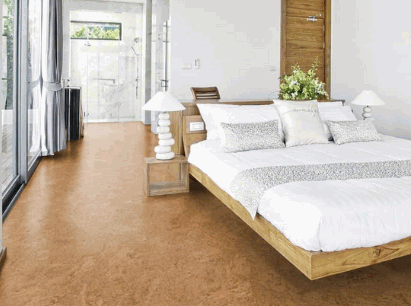
Bamboo
Bamboo flooring offers a durable and eco-friendly choice for bedroom floors, with a unique aesthetic appeal and minimal maintenance needs. Its resilience, environmental sustainability, and ease of installation make it an attractive and environmentally conscious flooring option for modern bedrooms.
The strength and durability of bamboo flooring make it a reliable choice for high-traffic areas like bedrooms. It’s natural beauty and varied grain patterns add a touch of elegance to any bedroom decor. Its minimal maintenance needs also contribute to its appeal, requiring only regular sweeping and occasional mopping to keep it looking its best. This makes it an ideal flooring choice for anyone seeking a low-maintenance and eco-friendly option.
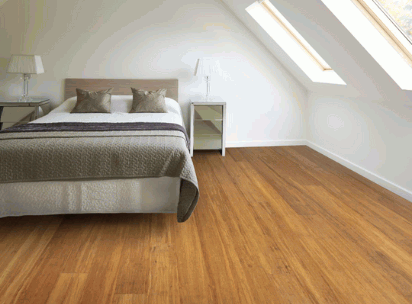
How To Choose The Best Bedroom Floor For Your Needs?
Selecting the ideal bedroom floor involves considering various factors such as durability, comfort, aesthetics, and maintenance, tailored to your specific needs and preferences. Understanding the impact of these factors will guide you in making an informed decision based on your lifestyle and budget.
Factors such as noise insulation and warmth are also crucial considerations. The type of flooring can significantly affect the acoustics in a bedroom, impacting the overall noise level. Some flooring materials retain heat better than others, contributing to a cozy ambiance. It’s essential to weigh these aspects against environmental suitability, as certain materials may have implications for indoor air quality and sustainability.
By integrating these aspects into your decision-making process, you can ensure that your bedroom floor aligns perfectly with your lifestyle and personal inclinations.
Consider Your Lifestyle And Preferences
When choosing a bedroom floor, it’s crucial to consider your lifestyle and personal preferences, ensuring that the flooring option aligns with your desired level of durability, comfort, maintenance needs, and visual aesthetics.
For those with an active lifestyle, durable flooring materials such as laminate, hardwood, or vinyl may be preferable to withstand frequent foot traffic. Similarly, individuals who prioritize comfort might lean towards carpet or cork flooring, which provides a softer underfoot feel.
Understanding the maintenance needs is also essential; for instance, wood floors may require regular polishing, while tiles are relatively low maintenance. Aesthetically, options like patterned tiles or natural wood can cater to various style preferences, contributing to a beautiful and personalized bedroom space.
Think About Maintenance And Durability
Assessing the maintenance requirements and durability of different flooring options is essential in ensuring a long-lasting and practical choice for your bedroom floor. Understanding the impact of maintenance and durability will guide you toward a suitable and sustainable flooring solution.
By considering maintenance, you can avoid high upkeep costs and labor-intensive cleaning routines. Durable flooring materials such as hardwood or laminate can withstand everyday wear and tear, minimizing the need for frequent replacements. Not only does this impact the long-term cost-effectiveness, but it also contributes to the visual aesthetics of your bedroom, providing a timeless and attractive look that complements the overall design and ambiance.
Consider The Room’s Lighting And Size
The lighting and size of the bedroom play pivotal roles in choosing the right floor, as they influence the overall aesthetics and visual impact of the room. Assessing these factors will help in selecting a flooring option that complements the room’s design and enhances its ambiance.
Proper lighting can make a small space feel more open and inviting, while in larger rooms, it can create a cozy and intimate atmosphere. When choosing flooring, it’s essential to consider how natural and artificial light will interact with different materials. For instance, light-colored floors can brighten up a dimly lit room, while darker floors can add warmth and depth to a well-lit space.
The size of the room influences the choice of flooring patterns. In smaller rooms, larger tiles or planks can visually expand the space, whereas in spacious bedrooms, intricate designs or mixed materials can add interest and dimension.
Take Budget Into Account
Considering your budget when selecting a bedroom floor is crucial, as it ensures that the chosen flooring option aligns with your financial constraints while meeting your desired level of durability and maintenance needs. Assessing the cost implications will guide you towards a practical and affordable flooring solution.
This approach helps avoid the common mistake of overspending on flooring, which could lead to financial strain and inadequate resources for other essential aspects of your bedroom design. By prioritizing cost-effective flooring options, you can strike a balance between affordability and long-term value.
Understanding the relationship between cost and durability enables you to make an informed decision that not only fits your budget but also minimizes future maintenance expenses. It is essential to explore a variety of materials and styles to find the most cost-effective solution that meets your aesthetic and practical requirements.
What Are The Pros And Cons Of Each Bedroom Flooring Type?
Evaluating the pros and cons of different bedroom flooring types is essential in making an informed decision that aligns with your needs and preferences. Understanding the advantages and potential drawbacks of each flooring option will guide you toward a suitable and satisfying choice for your bedroom.
When considering bedroom flooring, it’s crucial to weigh factors such as installation, maintenance, and durability. Hardwood flooring offers a timeless, elegant look but can be noisy and requires regular upkeep. On the other hand, carpet provides warmth and softness underfoot, but it may trap allergens and stains.
Options like laminate or vinyl offer cost-effective solutions, with easy maintenance and diverse design choices. Assessing these factors will help you find the perfect balance of style, comfort, and practicality for your bedroom.
How To Install Different Types Of Bedroom Flooring?
Understanding the installation process for different bedroom flooring types is crucial in ensuring a successful and efficient implementation. Knowing the specific requirements and techniques for installing hardwood, carpet, laminate, tile, vinyl, cork, and bamboo flooring will guide you in achieving the desired results for your bedroom.
Hardwood flooring requires careful preparation of the subfloor, precise measurements, and proper acclimatization of the planks before installation. When installing carpet, you need to ensure a smooth and clean subfloor, use the right adhesive, and carefully sewn the pieces together.
Laminate flooring installation involves a simple click-and-lock mechanism, while tile flooring demands meticulous layout planning and accurate mortar application. When installing vinyl flooring, proper subfloor preparation and effective seam sealing are vital. Cork and bamboo flooring installations necessitate attention to detail in laying and caring for eco-friendly materials.
Carpet Installation
Carpet installation in the bedroom involves specific techniques and processes that require the use of essential tools and materials. Understanding the step-by-step process for carpet installation will guide you in achieving a seamlessly laid and visually appealing bedroom floor.
- To begin, gather essential tools such as a knee kicker, power stretcher, carpet knife, seam roller, and measuring tape. Ensure you have the necessary materials, including carpet padding, tack strips, seam tape, and of course, the chosen carpet.
- Start by preparing the subfloor, making sure it’s clean, dry, and free of any debris.
- Then, carefully measure and cut the carpet and padding to fit the room.
- Attention to detail is crucial in securing the carpet, avoiding wrinkles, and creating seamless seams.
Following these steps will result in a professional-looking and long-lasting carpet installation in your bedroom.
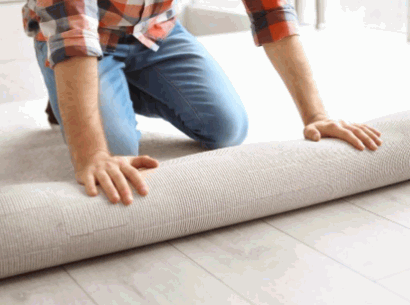
Hardwood Installation
Installing hardwood flooring in the bedroom involves specific techniques and processes that require the use of essential tools and materials. Understanding the step-by-step process for hardwood installation will guide you in achieving a timeless and elegant bedroom floor.
First and foremost, it’s crucial to prepare the subfloor by ensuring it is smooth and level to avoid any imperfections on the hardwood surface. Key tools to have at hand include a pneumatic flooring nailer, moisture retarder, and adhesive strips for a secure fit.
When it comes to materials, opt for high-quality hardwood planks such as oak, maple, or walnut for durability and classic appeal. Careful measurement and precision cutting during installation are essential to create a seamless and visually pleasing hardwood floor.
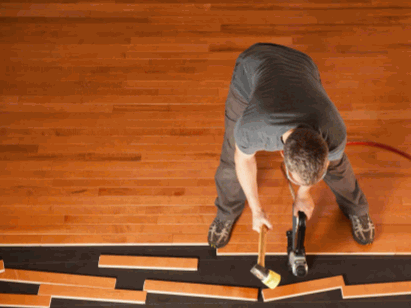
Laminate Installation
Installing laminate flooring in the bedroom involves specific techniques and processes that require the use of essential tools and materials. Understanding the step-by-step process for laminate installation will guide you in achieving a cost-effective and stylish bedroom floor.
To start the installation, gather the necessary tools including a tape measure, spacers, a saw, a tapping block, and a pull bar. The materials such as underlayment, laminate flooring, and transition strips are vital for a successful installation.
Once you have the tools and materials ready, ensure the subfloor is clean, level, and dry, creating a smooth base for the laminate. It is also crucial to acclimate the laminate planks in the room for at least 48 hours before installation to prevent potential warping. These preparatory steps are essential for ensuring a durable and flawless laminate floor in your bedroom.
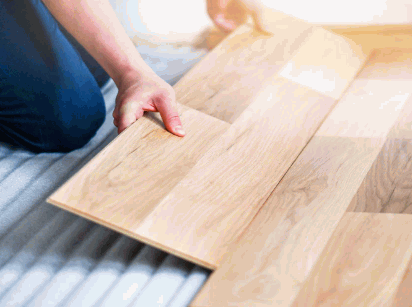
Vinyl Installation
Installing vinyl flooring in the bedroom involves specific techniques and processes that require the use of essential tools and materials. Understanding the step-by-step process for vinyl installation will guide you in achieving a versatile and resilient bedroom floor.
Begin by ensuring that you have the necessary tools, including a utility knife, measuring tape, and a trowel for adhesive application. The materials needed consist of vinyl planks or sheets, adhesive, underlayment, and trim pieces.
Prioritize preparing the subfloor by cleaning, leveling, and removing any debris. Next, measure and cut the vinyl to fit the room, leaving necessary expansion gaps at the edges. Proper installation and securing of the vinyl with adhesive will ensure a visually appealing and durable bedroom flooring solution.
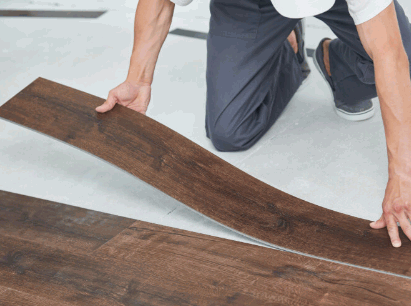
Tile Installation
Installing tile flooring in the bedroom involves specific techniques and processes that require the use of essential tools and materials. Understanding the step-by-step process for tile installation will guide you in achieving a durable and visually appealing bedroom floor.
To begin, you’ll need tools such as a tile cutter, trowel, grout float, and spacers, along with the materials including tiles, adhesive, and grout.
The first step is to prepare the subfloor, ensuring it’s clean, flat, and free of any debris. Next, measure the room to plan the layout of the tiles, starting from the center for a balanced look. Applying adhesive and laying the tiles in a consistent pattern follows, using spacers to maintain even spacing.
Once the tiles are set, grout is applied and thoroughly cleaned for a polished finish.
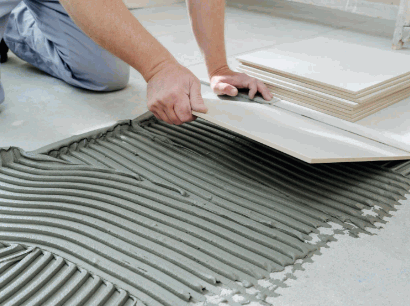
Cork Installation
Installing cork flooring in the bedroom involves specific techniques and processes that require the use of essential tools and materials. Understanding the step-by-step process for cork installation will guide you in achieving a comfortable and eco-friendly bedroom floor.
Begin by preparing the bedroom floor, ensuring it is clean, dry, and level. Necessary tools such as a handsaw, tape measure, and rubber mallet, along with materials like adhesive and underlayment, are essential. Carefully lay out the cork tiles or planks, ensuring a snug fit and allowing for expansion gaps.
When it comes to comfort and sustainability, cork provides a cushioned surface with natural insulation properties, reducing noise and creating a warm ambiance. Its eco-friendly nature makes it an ideal choice for those seeking a renewable and durable flooring option.
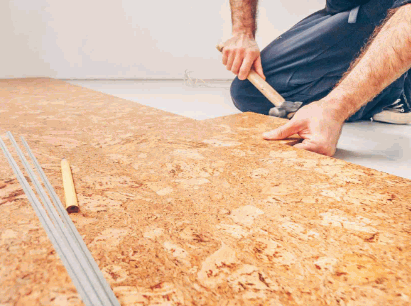
Bamboo Installation
Installing bamboo flooring in the bedroom involves specific techniques and processes that require the use of essential tools and materials. Understanding the step-by-step process for bamboo installation will guide you in achieving a resilient and environmentally conscious bedroom floor.
- To start, the tools needed for bamboo flooring installation include a moisture barrier, adhesive, a tapping block, spacers, a power saw, and a measuring tape.
- As for the materials, bamboo flooring, underlayment, and transition strips are essential.
The step-by-step process begins with preparing the subfloor, ensuring it is clean, dry, and level. Next, the moisture barrier is laid, and the underlayment is installed. Carefully lay the bamboo planks, leaving space for expansion, and use the tapping block and power saw to ensure a snug fit. Install the transition strips and admire your resilient, eco-friendly bedroom floor!
